Matador Network's Blog, page 1253
September 26, 2018
7 epic bike tours around the world
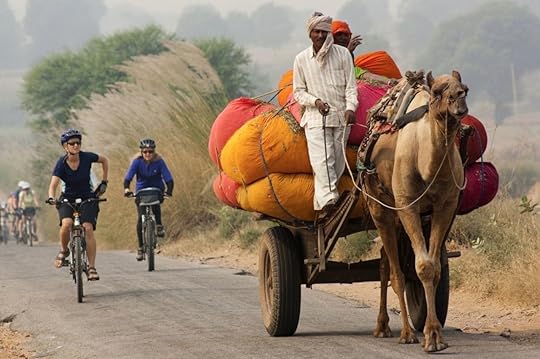
From cable car rides to epic hikes, there are a lot of ways to see a country. That said, if you really want to see a place up-close, yet still hope to cover a lot of ground and maximize your time, a bike tour is the way to do it — and you’ll even get some exercise. The following seven epic bike tours around the world offer the kind of scenic and unforgettable experience that you just can’t duplicate with any other method of transportation.
1. Travel photography and high-altitude wines in northwest Argentina

Photo: aaabbbccc/Shutterstock
If you love drinking and biking just as much as getting that killer Instagram shot, check out the Argentina: Vision and Vine tour through northwest Argentina with celebrated travel photographer Ossian Lindholm. Lindholm provides hands-on field instruction and nightly Photoshop sessions as you pick up his secrets for capturing the perfect landscape photo — all on an itinerary designed by him. The agenda also includes sipping high-altitude wines as you tour the world’s highest vineyard, plus exploring the humid sub-Andean sierras, the Andes, and the high-plateau Altiplano.
2. Traditional experiences in Japanese villages
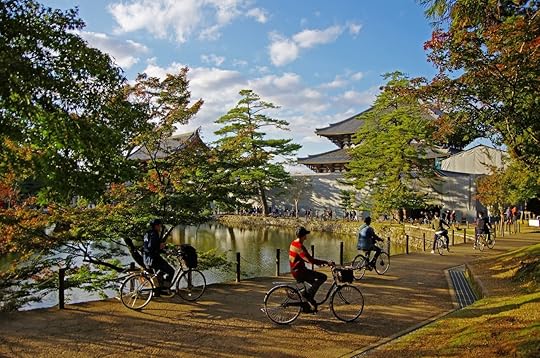
Photo: LO Kin-hei/Shutterstock
Enjoy a cultural experience complete with temples and tea leaves on a seven-day Japan bike tour through Nara, Kyoto, Mount Yoshino, and Koyasan. As you cycle through tiny Japanese villages, you’ll see tea fields, bamboo groves, landmarks like Mount Koya, UNESCO World Heritage site Tōdai-ji, and more. Along the way, you’ll stay in traditional ryokans (a type of Japanese inn), meditate with Buddhist monks, and participate in sake tastings.
3. Volcanoes and glow worms in New Zealand
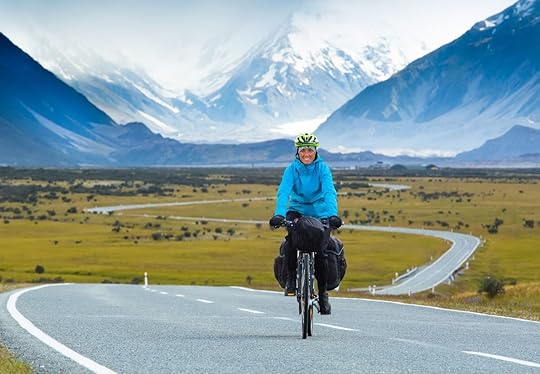
Photo: TDway/Shutterstock
Spend eight days biking New Zealand on the Volcanoes Tour from Rotorua south to Auckland. As if the lake, forest, and volcano scenery you’ll pass aren’t mind-blowing enough, the true highlight of the trip is a farm stay on a sheep farm before heading to the Waitomo Caves for a breathtaking natural glow-worm display. Also on the agenda: Huka Falls, the Waikato River, and an overnight stay on the shores of Lake Taupo, the largest lake in New Zealand, before climbing in Tongariro National Park among three active volcanoes, craters, and boiling mud pools.
4. South Africa with a celebrity chef
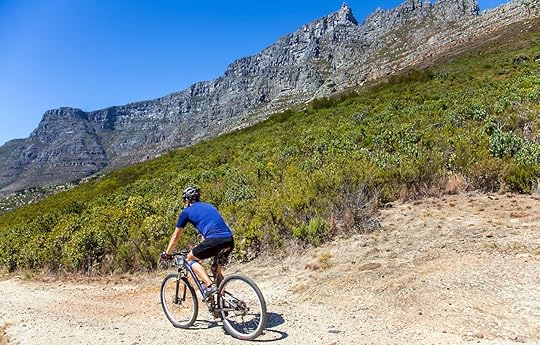
Photo: Bildagentur Zoonar GmbH/Shutterstock
If you consider killer views and top-notch cooking right up your alley, book the Chef on Wheels bike tour in South Africa and ride along with celebrity chef Seamus Mullen to places like Hout Bay, Chapman’s Peak Drive, and Table Mountain National Park. For six days, you’ll bike across the Western Cape and Winelands as Chef Mullen’s spin on regional cuisine keeps you fueled every inch of the way. This bike tour is intended for intermediate-level riders who are comfortable biking an average of 15 to 40 miles per day.
5. Indian backroads from Udaipur to the Taj Mahal

Photo: KE Adventure Travel
Ride 225 miles from Udaipur to the Taj Mahal on a cycling tour of Rajasthan, India, and experience all the sights, sounds, and smells of India’s backroads. You’ll tour Delhi by bike on the first day, then take a sleeper train to Udaipur to begin your lengthy two-wheeled journey. The tour progresses along country roads to towns like Kumbhalgarh, Ghomti, and Jaipur, with a break for a game drive — basically a self-drive safari — in Sariska. Some rides even coincide with the Pushkar Camel Festival, a multi-day affair during which 30,000 camels converge in the tiny desert town.
6. Epic 42-day tour across continents from Estonia to Istanbul
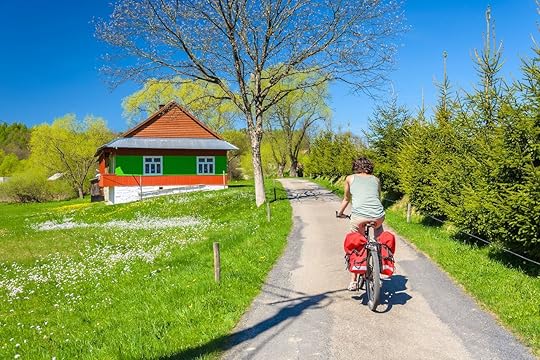
Photo: Pawel Kazmierczak/Shutterstock
For a bike tour of truly epic proportions, check out the cross-continental 42-day tour from Estonia to Istanbul. Not a trip for the faint of heart (or the untrained cyclist), the tour pedals over 2,300 miles through Estonia, Latvia, Lithuania, Poland, Slovakia, Hungary, Romania, and Bulgaria en route to the final destination: Turkey. Participants will learn history and take in unparalleled sights and experiences like the Transylvanian Alps, Carpathian Mountains, and many capitals of Baltic nations on this once-in-a-lifetime-level trip.
7. New Year’s Eve celebration in Santa Barbara and the wine regions beyond
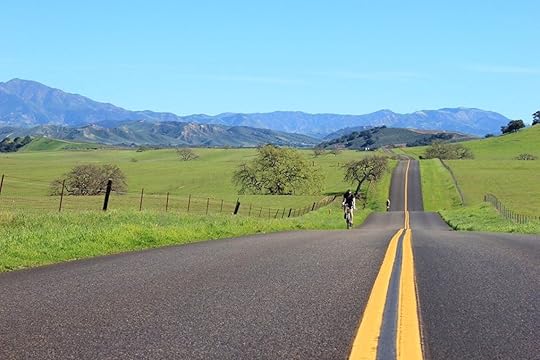
Photo: DuVine Cycling + Adventure Co./Facebook
Grab your besties and do something different this year: Ring in New Year’s Eve on wheels. On this four-day bike tour through southern California’s Santa Ynez Wine Country, you’ll begin in Santa Barbara with dinner and a rooftop party, then ride through California towns with views of horse ranches and the Santa Ynez Mountains. Along the way, you’ll get the chance to sample the Santa Maria Valley’s wines in the town of Los Olivos; explore Solvang, a Danish-inspired settlement; and enjoy the burgeoning food scene of hidden Santa Ynez Valley. 

More like this: 7 of the most scenic biking routes in Europe
The post The 7 most epic bike tours around the world appeared first on Matador Network.

Lfyt offering $550 in new challenge
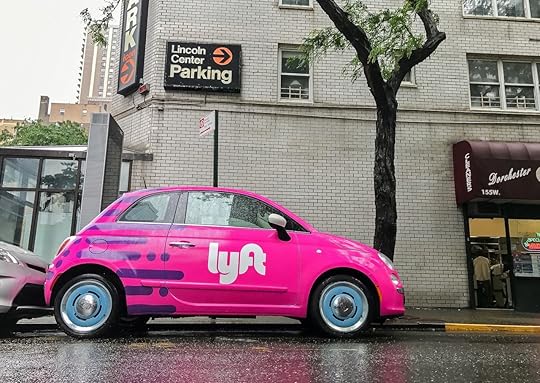
If Lyft’s “ditch your car challenge” has its desired effect, personal car ownership could become a thing of the past. Lyft launched the challenge last month, offering 100 Chicago residents a $550 credit to give up their cars for a whole month. The credit could be applied to Lyft trips, bike- and car-sharing services, and public transit. The response was so positive that Lyft has decided to expand the challenge to 35 new cities, including New York, Boston, and San Francisco. (The full list is available here.) Phase two of the “ditch your car” challenge will kick off on October 8th, and Lyft is aiming to get at least 2,000 people signed up.
While the promotion may reek of a marketing gimmick, Lyft President John Zimmer insists that’s not the goal at all. In an interview with The Verge, he said the challenge is part of an effort to reduce American dependence on personal vehicles and relieve some of the congestion that plagues major cities. “By making it a movement,” he said, “by making it an event, people are like, ‘Oh, let me try this experiment.’ Then they realize, ‘Wow, I get all this time back. I’m actually saving money. I’m more relaxed.’” With the $550 financial incentive, Lyft is hoping to hammer home the cost-effectiveness of ride sharing.
In the interest of saving money and reducing gridlock, Lyft has previously called for US families to sell their second cars and explore ride-sharing options. However, there is some debate about whether ride-sharing companies are helping city traffic or making it worse. A recent study by transportation expert Bruce Schaller reported that companies like Uber and Lyft have actually added 5.7 billion miles of driving in the nation’s largest cities. Similarly, a study by UC Davis, released in October, found that 49-61% of ride-sharing trips could easily be made by walking, biking, or public transit.
Zimmer argues that Lyft is part of the solution, not the problem, but some cities have already passed laws to limit the number of ride-hailing vehicles on the streets. So you might want to take advantage of that $550 credit before your city makes Lyft scarce. 
H/T: The Verge

More like this: Is it cheaper to rent a car or take an Uber? Everything you need to know.
The post Lyft will pay you $550 to ditch your car for a month appeared first on Matador Network.

Nimmo Bay Wilderness Resort in BC
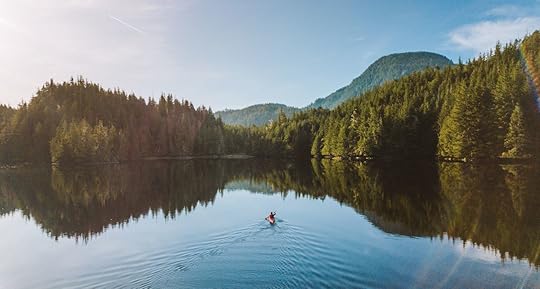
When Craig Murray discovered a waterfall in a small sheltered bay in British Columbia’s Great Bear Rainforest almost 40 years ago, he knew immediately: This was where he and his family would create his vision of a family resort. He calls this waterfall the “lifeblood of Nimmo Bay.” It’s located in the heart of the Nimmo Bay Wilderness Resort — steps away from the guest cabins and main lodge — and provides fresh drinking water and nearly 100 percent of the electricity.

Photo: Scott Sporleder
When I visited the resort this past spring, the waterfall was raging, full of spring melt from the snow-capped mountains towering above. When it’s calmer, the bottom becomes a plunge pool, an invigorating contrast to the two cedar hot tubs situated nearby. Even if you don’t take the plunge, relaxing in these tubs amidst the trees and the waterfall is a special experience in itself.
To say Nimmo Bay Wilderness Resort is remote is an understatement. There are no roads in — it’s only accessible by sea or air. Unless you have your own boat, you’ll most likely arrive by air (float plane or helicopter). Bookings are all made through the website, and the lodge is only open from May 1 to October 31 each year.
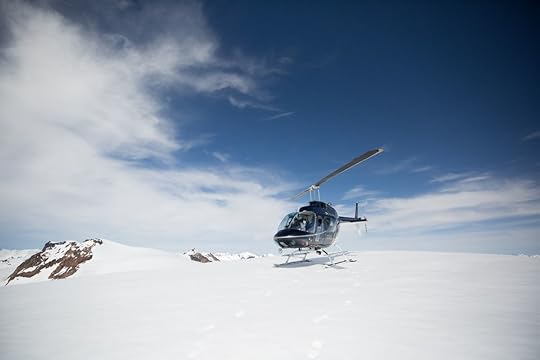
Photo: Scott Sporleder
The original lodge was built on northern Vancouver Island and floated to Nimmo Bay in May 1981. Today, the resort has nine guest cabins, a floating spa, massage rooms, a rec room, three helicopter pads, and a beautiful common building. I was struck by the craftsmanship and level of detail of the buildings and furnishing, and how it all seamlessly blends into its forest surroundings. It’s no wonder why it’s one of National Geographic’s Unique Lodges of the World.

Photo: Scott Sporleder
Historically, Nimmo Bay Wilderness Resort has been a heli-fishing lodge; guests get transported up into the mountains to fish in pristine rivers and streams. Over the past several years, it’s evolved into an eco-tourism destination and now offers many experiences in addition to fishing, from whale- and bear-watching to heli-biking and old-growth forest hiking. You can even have a picnic lunch on a mountaintop glacier. (I did, and I highly recommend it.) However you want to spend your time there, the resort will do everything it can to make it happen.

Photo: Scott Sporleder
In speaking with husband-wife duo Craig and Deborah — and their three kids Fraser, Georgia, and Clifton — it was clear that this is not merely a business but a home. The family was pretty much raised in this isolated part of BC, and the experiences they’ve had growing up is what they passionately pass on to the guests. Fraser, the oldest child who now runs the operation, said that they’re “sharing our life out here… and we’re just making it available to other people to enjoy and share that experience.”
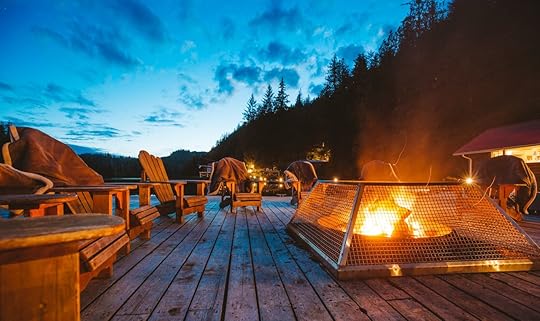
Photo: Scott Sporleder
This is what I felt as I chatted with staff and other guests around a bonfire on the floating deck, or seated around a beautiful massive oak table enjoying a meal together, or watching the family give an impromptu musical performance where we all clapped and sang along. The resort was built on family values, and it’s tangible: I felt like I was at home. 

More like this: 6 high-alpine ridge walks you need to do in BC this summer
The post This remote floating resort in a rainforest in British Columbia is Canadian paradise appeared first on Matador Network.

3 awesome places for ski vacations

Skiers and snowboarders are fond of overarching statements. “I’ve skied Utah,” they might say after a four-day road trip to three different resorts. The thing is, it’s impossible to experience a great ski area in one day. Knowing a mountain requires enough time to explore its many slopes, or even lapping the same run a few times to find a truly memorable line.
If you’re putting in the effort and money to do a big ski trip, do yourself a favor and spend some time getting to know a single destination. Instead of rushing down the highway to the next mountain, we recommend exploring one of the three following resorts this winter.
If you buy your pass and book now, you’ll save big bucks by locking in first-choice dates outside of peak times like Christmas and New Year’s, Martin Luther King, Jr. Day weekend, and spring break. Plus, if you’re a savvy ski traveler that wants to ski the entire season, buying a season pass now means you won’t have to break the bank.
How to build a ski trip around your season pass.
The season pass war between the 10-year-old Epic Pass and its debut rival, the Ikon Pass, has reached a fever pitch. For bargain-seeking skiers, this is a good thing — at least in the short term. Throughout 2018, the two passes have tried to one-up each other, adding access to new mountains in the United States and internationally. It has never before been possible to ski so many resorts with one pass for less than $1,000 USD. Both offer international access in Canada, Australia, and Japan. In addition, lodging deals abound for holders of both passes, so check resort websites before booking that Airbnb.
If you haven’t bought a pass yet, base your decision on three factors: how many days you plan to ski this year, a good local hill, and a major destination. Adult, unlimited passes for the 2018-19 season are about $900 right now. Single-day lift tickets can top $100 on the mountain, but cost less if bought in advance online. The upshot is that if you’re only going to take a one-week ski trip all winter, an unlimited pass doesn’t make sense. But add in a couple of ski weekends — provided they’re at resorts that all take the same pass — and the economics work.
Also, you want a pass that gives you access to a quality mountain in your area, assuming you’re within driving distance of the slopes. If your ski plans require getting on a plane, identify your target destination and move forward with the pass that covers it. Look into the options for a local pass, a pass for a certain number of days, or one with blackout dates to save extra money.
For Epic Pass holders — Stevens Pass Resort, Skykomish, Washington

Photo: Cascade Creatives/Shutterstock
The long-standing but always-improving champion of ski passes, the Epic Pass, returns this year buoyed by Vail Resorts’ ongoing push toward ski industry domination. They’ve added Stevens Pass Resort and Telluride to the roster this year. Plus, you can take advantage of pass-holder benefits such as the EpicMix app, which is kind of like a social network for skiers that tracks total vertical, stores photos from your season, and more.
Vail Resorts acquired Stevens Pass Ski Resort in August, adding another high-profile hill to its growing roster and boosting the Epic Pass in its war against Alterra Mountain Company. This resort is perfect for spending a few days exploring the hill without feeling tempted to head down the road because it’s the only Vail Resort in Washington. Some snowfalls can be light and dry, but the northwest can also have wetter snow, due to warmer weather. Either way, the good news is they get a lot snow — averaging 460 inches per year. Stevens Pass is also known for its legendary bowls and steep drops. Higher up, sparse trees dot wide-open powder faces, allowing for long linked turns and plenty of room to spread out. If you didn’t get in enough laps during the day, the resort offers night skiing across six of their lifts.
Where to stay
A trip to Stevens Pass Ski Area is the perfect opportunity to live out those mountain cabin fantasies. The resort lists a number of lodging options in nearby Skykomish, which is a small village west of the resort and about an hour from Seattle. About 40 minutes east of the resort, Leavenworth is a cute town boasting Bavarian-themed architecture, with cozy restaurants and pubs lining downtown along Front Street. Airbnbs tend to run in the $100-150 range for dual occupancy, though both cheaper and pricier options are available.
Keep the German vibe going with dinner at Andreas Keller Restaurant and throw down late at night at The Loft Bar and Grill. If you still haven’t had enough Euro-mountain chic, the aptly named Bavarian Bistro Bar has a schnitzel and a pint with your name on it.
How to get there
Fly into Seattle-Tacoma International Airport. Rent a four-wheel drive vehicle and head up Stevens Pass; it’s just under two hours to the resort. If you’re staying in Leavenworth, the drive is about two hours and fifteen minutes.
For Ikon Pass holders — Squaw Valley-Alpine Meadows, Lake Tahoe, California
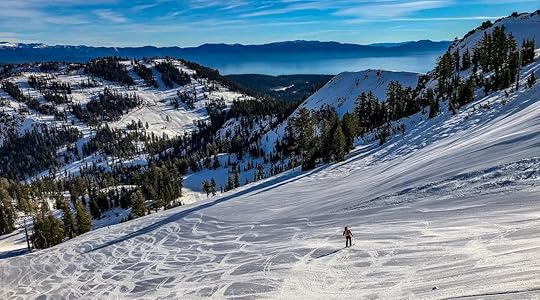
Photo: CSNafzger/Shutterstock
The rival Ikon Pass, the debut offering from the newly-minted Alterra Mountain Co., is built to do two specific things: one, give the Epic Pass a legitimate run for its money by bringing together 36 destination ski resorts not under the Vail Resorts banner, and two, finally give you and your long-lost ski buddies on opposite ends of the country the kick in the pants you need to actually book that trip you’ve talked about for years.
Squaw Valley and its neighbor Alpine Meadows offers 29 lifts and an average of 450 inches of snow per year. Both have a wide range of intermediate terrain and tend to pile up on the snow by the holidays, meaning you don’t have to wait until February to get some good days in. If any in your party fret about the cold, sell them on the fact that days at Lake Tahoe ski hills are, on average, much warmer than further inland resorts in Montana, Wyoming, and Colorado. Plus, you can gamble and partake in Tahoe’s legendary nightlife scene after the lifts shut down. With cheap flights into Reno-Tahoe International Airport, you’re looking at a recipe for success.
If you’re a seasoned skier, the term KT-22 may have come up in conversation over the years. Most likely dropped casually from the lips of someone with an overly excited look on their face, who will then pause to gauge your reaction. Are you down, bro? This person isn’t referring to the micro-lubricant used by watchmakers. They’re talking about one of the most legendary ski lifts in the country, one that offers access to Squaw’s steepest and most challenging runs and draws pro skiers and boarders to its kickass terrain almost daily. The lift heads right from the base to 8,000 feet up with direct access to couloirs and chutes, cliffs, and general powder-filled bliss. It’s not easy, however — proceed with caution if it’s your first time.
Where to stay
If skiing is the priority, stay at the base of Squaw Valley or in Truckee. Airbnbs can typically be found for under $100 per night during non-peak times, and you’re only 12 miles away. With about 16,000 residents, Truckee also has plenty of restaurants. Check out the Truckee Tavern and Grill with the crew, or Pianetta for date night and a mellow bar scene far removed from the bros and bachelor parties of South Lake.
South Lake Tahoe is the place to be for off-mountain shenanigans. You’re looking at just over an hour drive from the ski resort, but you won’t find better nightlife at Lake Tahoe. Many casinos are just over the state line in Nevada, and the area has solid public transit and shuttle service to get you around. Whiskey Dick’s and RoJo’s Tavern are the spots to start or end a night, with the beer garden at the Basecamp Hotel being a solid après-ski hangout.
How to get there
Reno-Tahoe International Airport is the closest large airport and is just under an hour drive from the ski resort. You’ll want to rent a car if you plan to move around the lake at all, though there are shuttles available if you’re staying at the base. Truckee has a small airport with limited service. If you fly into San Francisco International Airport or Oakland International Airport, the drive is around four hours, unless you hit weekend traffic.
For powder hounds not bound by a season pass — Wolf Creek Ski Area, Mineral County, Colorado

Photo: Wolf Creek Ski Area
This one’s for the true powder hunters, those not afraid to stray far away from the luxury lodges and perfectly crisp groomers of Colorado’s well-trodden I-70 corridor. In the far south of the state, Mineral County has a population of 726; but you won’t even pass through the town of Creede, the county’s only “hub,” on your ski trip. Wolf Creek is one of the few Colorado ski areas that has flat-out resisted over-development and corporate takeovers, to the point that southern Colorado locals regularly petition government officials and the forest service against development proposals that threaten to turn Wolf Creek into another destination resort for the wealthy.
As a result, this powder haven draws a parking lot full of die-hards to the top of Wolf Creek Pass every day throughout the winter. Averaging 480 inches of snow per year, the resort boasts the most powder and often the shortest lift lines of anywhere in Colorado. Keep in mind that this massive amount of snow is light, fluffy Colorado powder — not coastal cake. You can lap the Waterfall Area all day or hike to Alberta Peak for fresh tracks (an activity so popular among locals that a beer was named in its honor) and not ever wait in a line. There’s even a new lift for the coming winter, which will access even more powder in the 900-acre Alberta Area on the resort’s backside.
Where to stay
There’s no lodging at the ski area itself. If you’re with a crew and want to have a night out on the town during your trip, Pagosa Springs is where you want to be. The town is about 30 minutes west of the ski area and has a number of hotel options and a handful of fun, chilled-out bars and restaurants. Kip’s Grill and Cantina is the first place you should stop for après-ski drinks. If you’ve seen the movie Out Cold (if you haven’t, stop what you’re doing and watch it right now), you’ll have a general understanding of what to expect from the vibe in the bar and the town in general. The biggest perk to staying here, however, is the Pagosa Hot Springs Resort, where you can soak away the soreness from the hill in a variety of tubs ranging in temperature from lukewarm to the piping hot Lobster Pot. Keep in mind that Pagosa is quite small, though the larger college town of Durango is only an hour away and offers a legit nightlife and restaurant scene (and also happens to be one of the 25 coolest towns in America).
For a quiet trip away from any hustle and bustle, stay in South Fork on the east side of Wolf Creek Pass. This tiny little town is home to a handful of cozy ski lodges, a couple restaurants, and not much else. But you’ll have the perk of being located closer to the airports on Colorado’s front range.
How to get there
Denver International Airport is the hub for most Colorado arrivals. After landing, you’re looking at a five-hour drive from Denver, and that’s if there’s no bad weather along the way. Colorado Springs Airport will knock an hour off the drive and often has good deals on flights during non-peak times. You can also fly into Durango and drive only an hour and a half if you’re willing to have a layover in Denver, Phoenix, Salt Lake City, or Dallas. No matter where you land, rent a four-wheel-drive car because the ski area is at the top of the notoriously sketchy Wolf Creek Pass. 

More like this: The 7 best ski resorts in Europe
The post 3 awesome ski vacations you should be planning now appeared first on Matador Network.

Virgin Holidays’ Departure Lounge
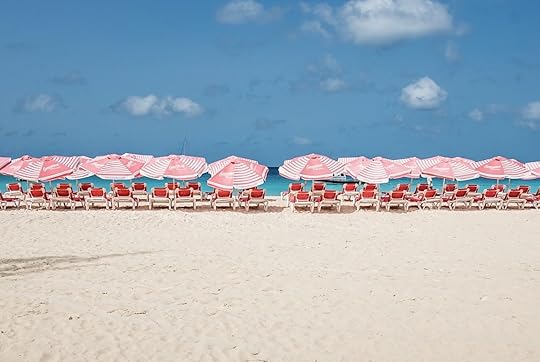
There’s nothing worse than having to check out of your accommodation in the morning when your flight isn’t until the evening. You have to lug your gear around all day, are stuck figuring out a way to kill time, and often aren’t able to truly take advantage of that final vacation day. Virgin Holidays is doing its best to remedy this situation. The new Departure Beach airport lounge in Barbados is designed to help you squeeze every last ounce of relaxation out of your trip, and make leaving paradise a little less painful. The private air-conditioned lounge, located right on Brownes Beach, has Wi-Fi, a beach bar and restaurant, and a Virgin Atlantic check-in desk. Guests will have access to complimentary beach towels, sun loungers, umbrellas, and even a free lunch, so they can continue their vacation right up until it’s time to board.

Photo: Virgin Holidays
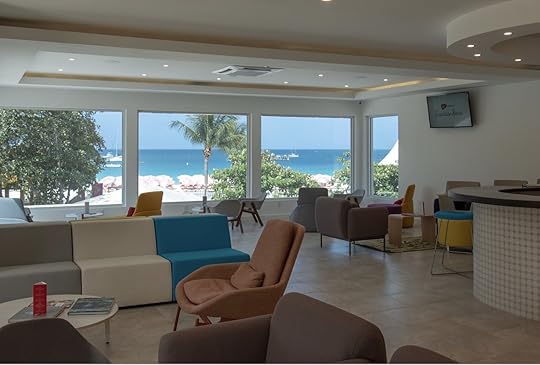
Photo: Virgin Holidays
But it’s not just a place to relax. Departure Beach staff will actually pick you up from your accommodation and transport your luggage to the airport. “We believe that a holiday should be a pleasure from beginning to end,” said Nicki Goldsmith, head of Caribbean and worldwide product at Virgin Holidays. “And [we] have been working hard to ensure we’ve removed as many pain-points as possible for our customers.”
While it might sound like the Departure Lounge is only open to guests willing to pay a costly premium, it’s actually free for any Virgin Holidays customer staying at Savannah Beach Hotel in Barbados, or taking a cruise that ends in Barbados. If you don’t fall into either of these categories, you can simply add Departure Beach to your booking for $33. 
H/T: Lonely Planet

More like this: 9 US airports where you can still get a kickass meal
The post This beachside airport lounge will help you get the most out of your vacation appeared first on Matador Network.

Fall colors in Japan

When I first arrived in Japan, I was taken with the culture and traditions, the history, the Japanese attention to details, and the country’s love and connection to nature. I was enraptured by the juxtapositions: old and new, simple and advanced, chaotic and peaceful, traditional and modern. But I have been fortunate to stay in Japan long enough to see another side of the country: its incredible colors. Once I found my feet, I left the blue gleam of high-rises and began to look more closely at the red torii gates, famously pink cherry blossoms, towering green bamboo, and fiery red maple leaves. I was drawn in, one shade at a time.
Midori
The Japanese people’s reverence — even fear — of nature’s power is evident. Having experienced the might of tsunamis, typhoons, and earthquakes, they’re acutely aware of the might of Mother Nature.
The Japanese landscape is very diverse; from mountains in Hokkaido to towering bamboo forests and the tropics of the Okinawa Islands. 70 percent of Japan is covered in forests.



Ki-iro
Shrines are Shinto, temples are Buddhist, and they coexist perfectly in the country. Gold is a color that is prevalent in the rituals of both faiths. To me, it will always be the color of burning incense, melting candles, traditional robes, and the murmur of prayers.

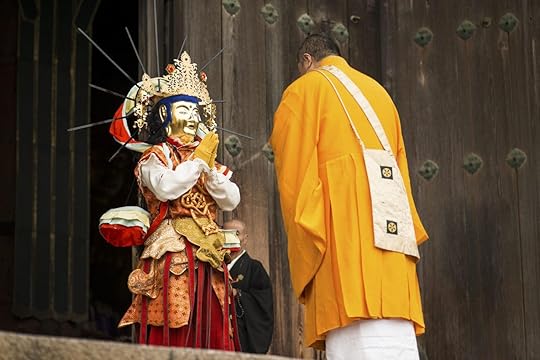
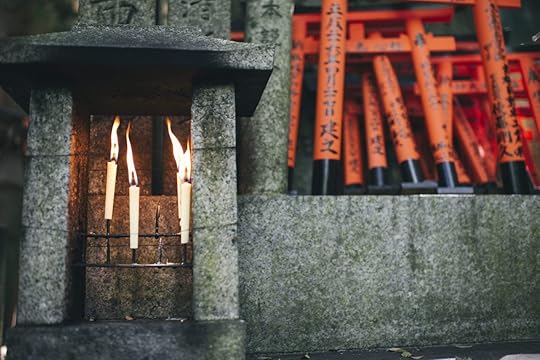
Ao
Tokyo is full of sparkly clean skyscrapers that reflect the light during the day whether it’s cloudy or sunny. My photographs of the city always had a blue tone to them. When I finally left Tokyo, I discovered other shades of blue all over the country — not in shiny buildings but rather in the massive blue sky and aqua ocean, a shade I would’ve expected to see in Hawaii, not Japan.
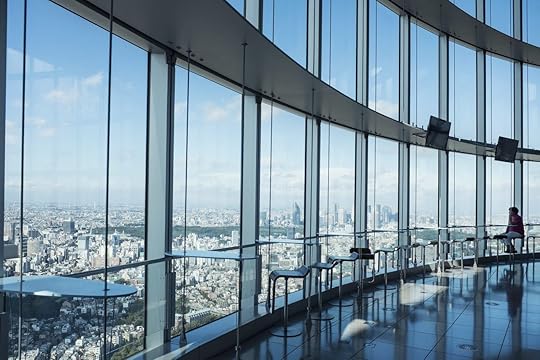
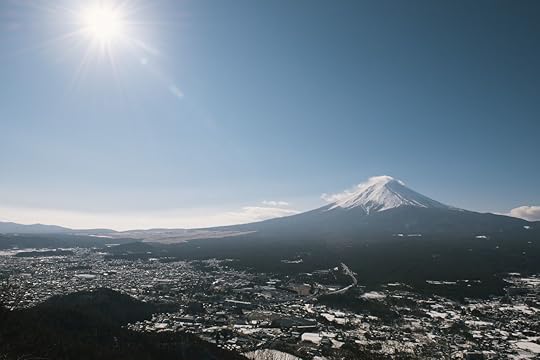
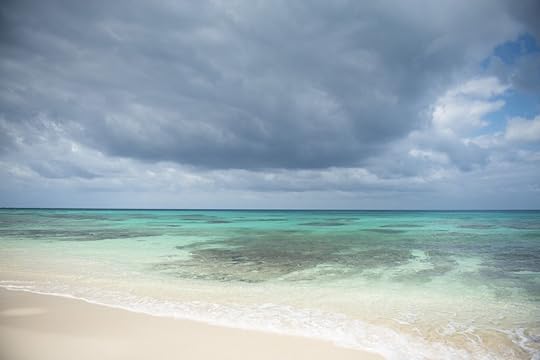
Orenji
At night, the blues of the city dimmed and the orange of brake lights, neon signs, and paper lanterns come out. But orange is also the color of the sunrise. In Tokyo, a city thumping with people until the early morning hours, a quiet dawn is a gift not to be missed.
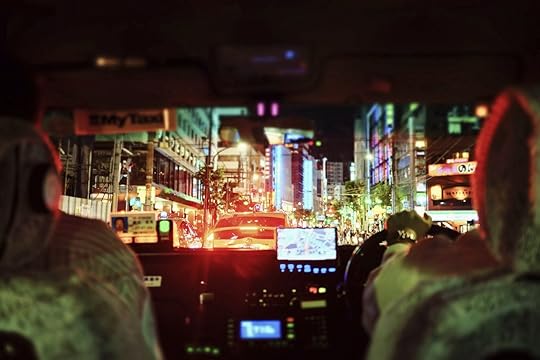
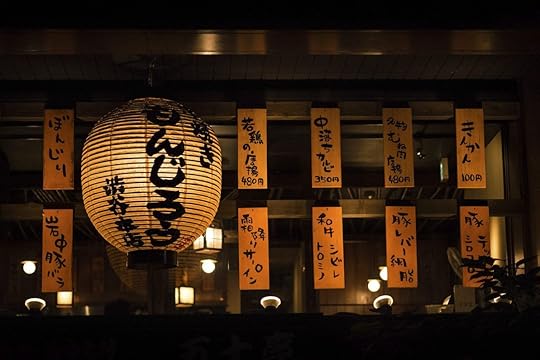
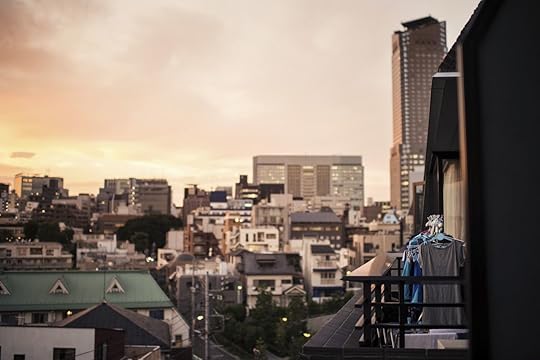
Aka
Upon my arrival, I was told that in the Japanese culture, red symbolizes happiness and joy. But my experience in the country has taught me that it is also the color of devotion — to people, tradition, and faith.



Pinku
Pink is the color of spring in Japan. Cherry blossom viewings are a spiritual time; it’s a time to reflect on your past year, to think about the year ahead, to remember friends and family who have passed or moved away, and to be grateful. This short season reminds us of how fleeting life is. When the blossoms are in full bloom, entire families go for hanami — a gathering under the pink flowers to reconnect with loved ones and enjoy the beautiful spectacle together.



Kasshoku
In Japan, the color brown is just as much the color of nature as green. It’s the color of tree trunks, deep roots, rich soil, foot-worn trails, and roads. It’s the color of the Ussuri brown bear, the Japanese hare, the Amami rabbit, the sika deer, and the famous Japanese macaque monkey. Brown reminds us of a time before plastic and concrete, when everything was made of wood: houses, temples, and bridges. 


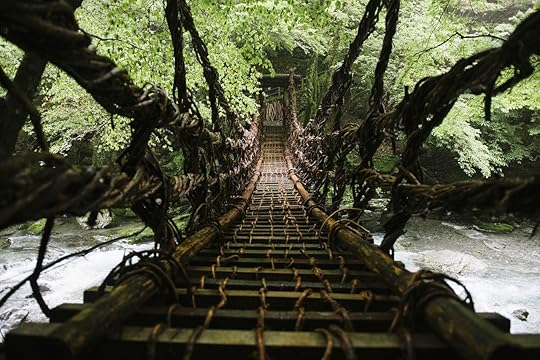

More like this: I can feel Japan calling me back
The post Fall in love with Japan one color at a time appeared first on Matador Network.

September 25, 2018
Why you must visit the Florida Keys

To say it’s a slow day at Playa Largo Resort’s water-sports tent would be an insult to slow. Like saying Blockbuster Video’s having a slow decade of sales.
Four eager guides are sitting on a brochure-covered desk, waiting behind polarized Oakleys for someone, anyone, to show up. The air is heavy and hot, and unlike most days in Key Largo, there’s not even a hint of a breeze. One strolls over to the dock and casts a fishing line into the water.
“September is usually slow,” another guide tells me as we sweat in the shade. “But I’ve never seen anything like this. So many people left after the storm, and they’ve been slooooow to come back.”
He takes a sip out of his Yeti as his colleague on the dock reels in a baby mahi.
“Might be able to make a sandwich outta that!” The guide I’m sitting with yells towards the dock. His colleague throws it back anyway. “Well, no wind today. You wanna go parasailing again?”
The scene at the luxe, brand-new Playa Largo isn’t unusual in the Florida Keys these days. While resorts like Playa Largo were left relatively untouched by Hurricane Irma, and have been open for business since last fall, America still seems to think the Keys are completely shut down — leaving an island chain full of shiny new resorts eerily empty.
“My family in New York asks me, ‘Is everything running? Are you back on?’” Playa Largo’s Conference Service Manager Kaitlyn Nutty tells me later at the resort’s bar. There is one other table occupied. “After a few weeks, nobody on the news cares anymore, there’s something else going on, and they’ve moved on. But we’re back in action, we’re here. And we’re waiting for tourists to come down.”
The prettiest drive in America gets prettier, with sparkling new resorts all to yourself.

Photo: Mia2you/Shutterstock
The drive to the Florida Keys down the Overseas Highway has always been spectacular, with aqua-blue water stretching to the horizon in all directions. And on many days, you had plenty of time to take in that view, as thousands of cars clogged the two-lane road. But traffic is lighter now, and as Irma knocked out a good chunk of the vegetation along this road — creating more unobstructed views of the water — the three hours from Miami to Key West feel like a relaxing float to a tropical paradise.
About an hour down the highway from Playa Largo, a nondescript left turn onto Duck Key brings me to the Hawks Cay resort, which reopened the last week of August. It’s an immaculate collection of perfect landscaping and paint-just-dried hotel suites, with bars that haven’t yet developed the trademark Keys stickiness forged from years of sweet drinks and humidity. The family pool has only a smattering of children; the resort’s palm-lined saltwater lagoon is empty.
A resort manager takes me over to the Hawks Cay’s dolphin lagoon where a small pod of dolphins lazily jump up out of the water as the sun sets behind them. Nobody had taken them out for a Dolphin Encounter today; they looked almost as relaxed and rested as the guests watching from the boardwalk.
If you ever wanted a piece of paradise to yourself, now is the time.
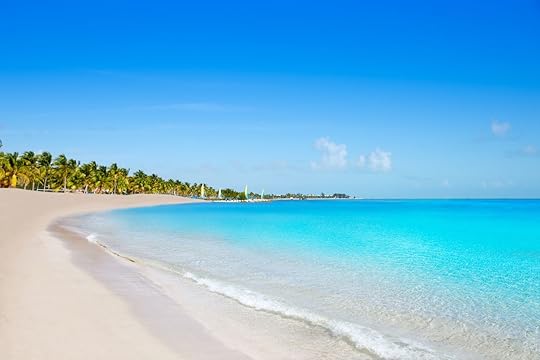
Photo: Tono Balaguer/Shutterstock
That night, an enthusiastic pair of Hawks Cay staff cajoled me over from a sunset fire pit to play trivia. My competition consisted of a young couple from Maryland and their one-year-old. When the one-year-old tired of her virgin Daiquiri, my competition was down to just the dad.
“How you liking it here?” I asked the man as we waited for his family to return.
“Awesome,” he said. “We’ve basically got the place to ourselves, and it’s beautiful. Everybody back home thought this place was still ruined. I’m not telling them, either.”
He laughed at his own joke and took another sip of his Coors Light. I felt good for him, but not so great for the Keys.
Irma caused nearly $6 billion in damages in Florida, according to the state’s Office of Insurance Regulation. But, in the year since then, much of the Keys’ share of that money has been used to create fully modern, updated resorts with cool new amenities. The problem is nobody knows.
“The best part about the Keys right now: there’s just so many new experiences,” General Manager Rich McKeown tells me over blueberry mojitos by the pool at Key West’s Havana Cabana resort.
“The hotels, 90 percent of them put money [into renovations]. There’s literally never been a better time to come. There’s this hint of pessimism from the tourists coming in. Our pace is down, but it’s important we get the message out that there’s never been a better time to come to the Keys.”
Getting the message out has been tough, as Monroe County — where the Keys lie — depends on a four-cent hotel tax to fund promotion of tourism. With the missing revenue from 2017, those funds are a fraction of what they were before. So explaining to America that the Keys isn’t only back but also better has been a challenge.
“I spent some time in Chicago a few months ago, at a hospitality trade show, and the amount of people who’d come up and say, ‘Are you open? Are you guys back open?’ was shocking,” Perry Hotel General Manager Troy Taplas tells me from the marina behind his hotel. “It’s ridiculous. The beaches are cleaned up. The water is beautiful. The fishing’s gotten better, from what everyone’s told me. There’s not a thing missing here that would preclude me from coming to the Keys.”
Cruising the Keys, I found that not much isn’t open after the storm. The famous Tiki Bar at Holiday Isle is still closed as is the sprawling, swampy Hilton next door to Playa Largo. Anne’s Beach is shut down as is about half of Bahia Honda State Park, the Keys’ lone postcard-worthy beach. But even there people have set up lawn chairs in the shallow water to enjoy the view of the old bridge just like they did a year ago.
New beaches, new restaurants, and vastly improved service.

Photo: Jewelzz/Shutterstock
The beach at the Amara Cay resort in Islamorada is new. Not that there’s anyone sitting there, necessarily, but it stands as an Instagrammable example of what hotels have done to improve after the storm. Like many resorts, Amara Cay took its flood damage and created a new attraction, transforming the old back patio into sand-strewn waterfront, complete with hammocks and lawn chairs set along the turquoise water.
Its new restaurant, Ciao Hound 84, is an Italian spot as good as anywhere in Miami. It sits a couple miles up the road on the Postcard Inn’s property, which is still closed. My empty shuttle arrives in an eerily dark parking lot with a lone lit-up restaurant in the middle. Though the restaurant is uncharacteristically packed, the service is impeccable — another common thread I found in the post-Irma Florida Keys.
As my guide at Playa Largo hinted, getting tourists back to the Keys has been a challenge. But getting people to work here has been even harder. As hotels took time to rebuild, hospitality workers left the Keys to find work, leaving the islands in a serious staffing crunch.
“People left, then had no house to come back for,” says Taplas. “So they can’t come back full time yet, so that put a strain on our already strained employment situation.”
“The bigger problem,” he continues, “is the expense of living here. A lot of those properties are damaged and destroyed, so we haven’t been able to raise (housing) inventory back up to a point where it’s affordable to live here.”
What’s resulted is an influx of employees from other countries, coming to Florida on J1 and student visas to learn hospitality and return home.
“The people we have now are a lot more ingrained in being here for a reason,” says Taplas. “They want to learn the hospitality business and take it back to Mexico or the Philippines, and take it with them as true knowledge.”
The lack of staffing has also led to higher wages for hospitality workers, which logically means the service will be better. For example, Taplas told me that a few years ago a starting cook at his previous employer would make $12 an hour. The starting rate at the Perry is $19.
It showed in nearly every resort I visited. Perhaps it was also because there weren’t many other guests competing for my attention, but every resort felt like five-star accommodations. Pool attendants brought drinks at just the right time. I never waited for a server. Front desk people were friendly and helpful. And no one seemed offended that tourists were intruding on their pristine island marshland.
You’ll only be sharing the Keys with the locals.
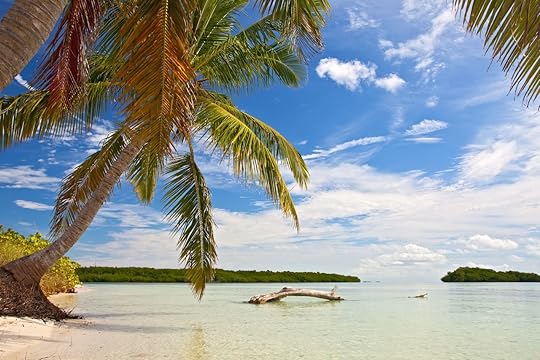
Photo: fotomak/Shutterstock
The pool at the Perry, which is in Key West, was a little livelier than the scene in the upper and middle Keys, with the industrial-chic boutique hotel packing people into the bar outside Matt’s Stock Island Kitchen on a Friday night. Taplas credited much of this to the hotel’s appeal to locals, offering happy-hour specials at the outdoor bar right when people return to the hotel’s marina from full-day fishing trips.
Attracting locals seems to be a popular way of buoying business until the rest of the world catches on to the Keys. Just past the entrance to Key West, the Cuban-themed Havana Cabana has opened its lush lagoon pool to the public. And on a Sunday afternoon in typically stymied September, every poolside chair was filled. People swam under the pool’s waterfall and crammed the bar ordering mojitos and empanadas from the hotel’s new food truck. It felt like a little slice of South Beach a couple hundred miles south.
The hotel was formerly the Hotel Key West, but after a six-foot wall of water wiped out the lobby during Irma, it closed and reinvented itself in a Cuban motif — complete with 1957 Chevys parked out front and forthcoming private-jet day trips to Cuba.
On Key West, only the Parrot Cay resort and Key West Bayside Inn remain closed. But up and down the Keys nearly every other hotel has something new, be it a restaurant, attraction, or private beach. Though the storm put a dent in the Keys’ monstrous tourism figures, they’ve not only rebuilt but also come back with better hotels, better service, and, for now, fewer people.
Word may not have reached all of America quite yet, but use that to your advantage. Because if there’s one thing that makes the Keys even more relaxing than they already are, it’s not having to share them with anyone. 

More like this: 13 ultimate Florida adventures you’ll remember for a lifetime
The post Why right now is the best time in history to visit the Florida Keys appeared first on Matador Network.

What Brexit means for UK-EU travel

If the UK proceeds with a hardline Brexit, travel between the UK and Europe is likely to get a lot more stressful for residents of Britain. Failure to reach a deal with the European Union prior to the UK’s departure could result in a serious disruption of travel between the UK and EU. If Brexit proceeds without a solid outline of the UK’s future relationship with the EU, travel restrictions could be just one of many new inconveniences British citizens will have to face.
To prepare citizens for the prospect of a “no deal” Brexit, the UK government released a set of preparation documents. “If the UK leaves the EU in March 2019,” they state, “with no agreement in place, UK and EU licensed airlines would lose the automatic right to operate air services between the UK and the EU without seeking advance permission.” Britain has promised to unilaterally give European airlines permission to land at British airports, but there is no guarantee that the EU will reciprocate. It would probably mean a disruption in airline service, at least temporarily.
Right now, the UK can operate any air route within the EU, but in a “no-deal scenario,” the UK would have to negotiate hundreds of new air service agreements, which could take quite some time. In addition to potentially grounding flights for a while, this process is also likely to increase ticket prices for British customers.
British pet owners would also need to prepare for travel “at least four months in advance of the date they wish to travel,” now being required to provide pet vaccination records, a health certificate, and report to a designated entry point upon arrival.
Since Brexit would remove the UK from the single market, UK passport holders will be considered “third-country nationals” — a term used to designate citizens of non-EU countries. With this designation, passports may require immediate renewal before they can be considered valid for EU travel. 
H/T: Secret Flying

More like this: Europe travel guide
The post A ‘no-deal’ Brexit could ground UK to EU flights indefinitely appeared first on Matador Network.

The 25 coolest towns in America
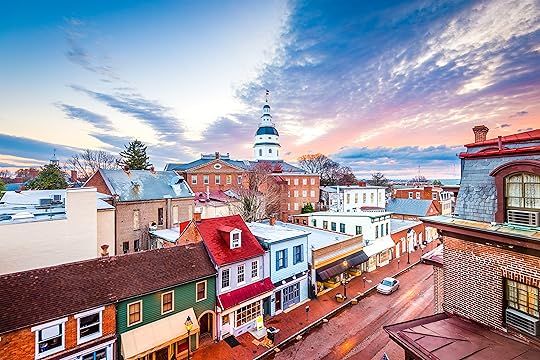

The 25 coolest towns in America: 2018
Photo: Sean Pavone/Shutterstock
Big, sexy cities get a lot of the hype in the world of American travel. Millions of people and easily accessible airports will do that. But as cities become prohibitively expensive and vacations get shorter, smaller towns have become appealing options. Talented chefs and creative entrepreneurs are going where the cost of doing business is cheaper, and what results are towns across America where the food, drinks, and general good times are often better than in major metropolitan areas. And, in many cases, these towns have way better access to nature than the big cities.
We took a look at towns with populations under 100,000 in this great land of ours, from a California beach town with some of the best surfing in the world to a tiny farm town in the Hudson Valley with an epic food and drink scene. From the plains of Kansas to the mountains of New Mexico and even out to the Hawaiian islands, we’ve found the ultimate collection of towns where people can have the weekend of their lives — and maybe even stay for good. Throughout these 25 selections (in no particular order), you’ll find some of the coolest places in America that don’t get nearly the attention they deserve, and get inspired for your next under-the-radar getaway.
This year’s list of coolest towns in America was written by Matthew Meltzer , Noelle Alejandra Salmi , and Laura Reilly , with nominations from the entire Matador Network staff.
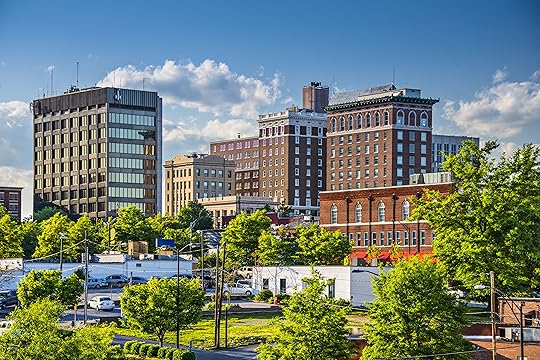
Greenville, SC
Photo: Sean Pavone/Shutterstock
1. Greenville, South Carolina
Population: 67,453
No small city in America punches above its culinary weight quite like Greenville, a city of just over 67,000 with restaurants better than cities ten times its size. In a 10-block radius near its downtown, you can find over 120 locally-owned spots. You can stroll down Main Street to one of the best burger joints in America at Grill Marks, head across the Reedy River to the James Beard-nominated The Anchorage, or cool off with a drink on the best rooftop bar in South Carolina at Up on the Roof.
But it’s not all calorie consumption in this underrated hotbed of Southern cuisine. Calorie burning is equally enjoyable along the Swamp Rabbit trail, a calm, woodsy recreational trail perfect for biking down to the town of Travelers Rest. To get further into nature, drive a short ways to Caesar’s Head State Park where a four-mile trail takes you to the spectacular Ravens Cliff Falls, where changing colors make for perfect fall photo-ops.
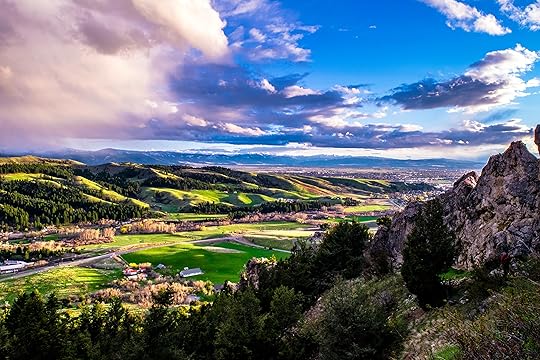
Bozeman, MT
Photo: Jeremy Janus Photography/Shutterstock
2. Bozeman, Montana
Population: 45,250
Bozeman sits in a nearly 5,000-foot-high plateau surrounded by stunning mountain ranges and, frankly, some of the most beautiful landscapes in the country. An hour and half drive takes you to Yellowstone National Park, Big Sky Ski Resort is only an hour away, and smaller ski resorts are reachable in 30 minutes. Bozeman is also heaven for fly-fishing fans, who can cast at Gallatin, Madison River, or Yellowstone River. Horseback riding is also big in Bozeman, as are rodeos (a big one each summer is the Bozeman Stampede). Add in hiking and mountain biking, and there’s no shortage of outdoor activities.
Bozeman is also home to Montana State University, which gives it a cool college town vibe – including brewpubs and museums. The Museum of the Rockies actually has the country’s largest collection of dinosaur bones. A crop of new restaurants have recently opened in Bozeman, adding to the great selection of affordable taco spots, Korean barbecue, and other college town fare. Despite the cold weather — December through March can be brutal — Bozeman’s charms have made it one of the fastest growing towns in the region.

Flagstaff, AZ
Photo: BD Images/Shutterstock
3. Flagstaff, Arizona
Population: 71,459
Flagstaff looks absolutely nothing like the Segoura-cactus-and-active-senior-community Arizona of your mind’s eye. Instead, it’s a woodsy mountain town that’s more akin to Colorado or northern Idaho, full of artists, students, and a smattering of hippies that keep it forever interesting.
The snow-capped mountains loom in downtown Flagstaff’s background, where you can walk to half a dozen breweries like Beaver Street Brewing and Lumberyard before getting the best traditional barbecue in the state at Bigfoot BBQ — then treating yourself to something sweet from Brookside Chocolate Company.
As the outdoorsy jumping-off point to all the spectacular nature of the high desert, Sedona is only 30 miles south, and the Grand Canyon is less than an hour away. Coolest yet, Flagstaff is also home to the Lowell Observatory, one of the oldest observatories in America and one of the best spots in the country to observe stars in the desert.

Gardiner, NY
Photo: Tuthilltown Spirits/Facebook
4. Gardiner, New York
Population: 5,664
A few years ago, you’d hardly be able to call Gardiner cool. It was little more than a farming town in the Hudson Valley, and its only visitors were families camping at Yogi Bear’s Jellystone Park. Thankfully, a man named Ralph Erenzo unwittingly changed all that. In the early 2000s, Erenzo had a simple dream to buy land and open up a camping hostel for rock climbers. But he was met with protests and insurmountable red tape from people who didn’t want outdoorsy vagabonds in their backyard. But they couldn’t stop him from pursuing agriculture — which, technically, includes booze. Erenzo went on to fight against New York’s outdated Prohibition laws to create the first distillery in the state since the ‘20s, Tuthilltown Spirits.
You can visit the Tuthilltown Spirits farm to tour the distillery, barrel barn, bottling facility, and gristmill. Sample a flight of its famed whiskey, including the award-winning Hudson Baby Bourbon, or try other spirits that range from vodka distilled from apples to fruity liqueurs made from local produce. But Tuthilltown isn’t the only reason worth coming to Gardiner. In town, visit Gardiner Liquid Mercantile, which produces its own spirits and whips them into craft cocktails, from a perfectly-made old fashioned to a whimsy s’mores-inspired White Russian. If you’re a little more health-minded, Gardiner also has an epic farmer’s market, farm-to-table restaurants, and plenty of hiking and rock climbing opportunities in the Shawangunks.
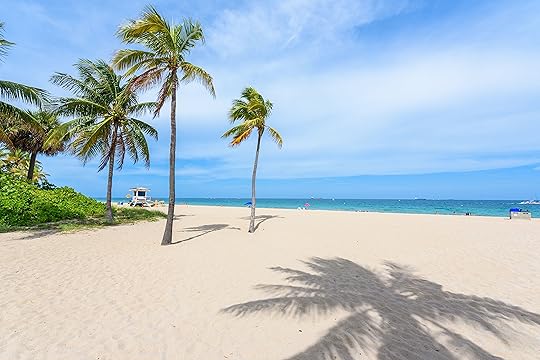
Lauderdale-By-The-Sea, FL
Photo: Simon Dannhauer/Shutterstock
5. Lauderdale-By-The-Sea, Florida
Population: 6,512
If someone dropped you on the sand in this little beach town, you wouldn’t believe you were smack in the middle of one of the biggest metro areas in the country. But by bucking the Florida trend and banning high-rise condos, this village between Ft. Lauderdale and Pompano Beach has created an identity of its own. Stroll on the sand in front of Aruba, the landmark beach cafe with destination-worthy Bimini bread, and you’ll feel almost like you’re on a remote Caribbean island with nothing but a concert bandshell and beach bar behind you. The hotels are the charming, beachfront two-story spots of family vacation nostalgia, and remind us that while Florida has grown, it still knows its funky coastal roots.
For divers, there is simply no better place in South Florida outside the Keys, where you can access an underwater shipwreck park from nearby Hillsborough Inlet. The SS Copenhagen — the odd wreck on the National Register of Historic Places — sits in only 30 feet of water, meaning novice divers and snorkelers can examine its remains on the reef. You can also find friendly nurse sharks, tropical fish, and stingrays along the coast. And in densely-packed South Florida, a town this relaxing and empty is a true find.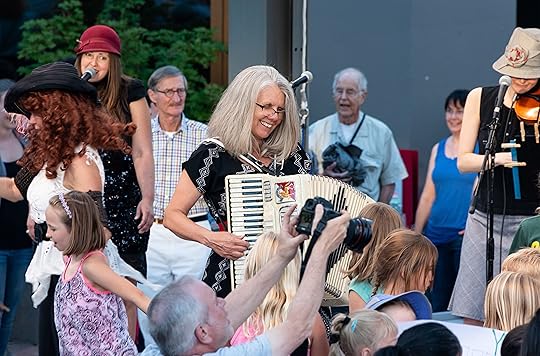
Ashland, OR
Photo: Chris Allan/Shutterstock
6. Ashland, Oregon
Population: 21,639
If Elizabethan England were populated by all the people who went to Woodstock — 50 years later — you’d find something like present-day Ashland. The city famous for its Shakespeare festival is decked out in buildings with architecture designed to look like the English countryside 500 years ago. But it’s actually filled with hippies hanging on to the glory days of the ‘60s and ‘70s with all the legal marijuana they can. It’s a place where you’ll meet far-out seniors, and won’t find it the least bit odd to have a long conversation about LSD with a guy in his 70s over a craft beer at Caldera Brewing.
Caldera is one of many Ashland breweries, but if you want to try a few in one spot head to Liquid Assets, which, in addition to having a killer draft selection, boasts over 250 wines by the bottle. If you’d rather be outdoors, grab a kayak and head down the tree-lined Rogue River. You can also trek through the Oredson-Todd woods, home to Oregon’s only native orchid and one of the most underrated waterfalls in the west.

Lawrence, KS
Photo: Jeff Zehnder/Shutterstock
7. Lawrence, KS
Population: 95,358
Kansas isn’t high up on many traveler’s bucket lists (barring those that are a little too obsessed with The Wizard of Oz), but this mini city is keen on changing everyone’s minds about the state. Home to the University of Kansas, Lawrence is full of youthful energy — especially when it’s basketball season when things can get a little wild at the many sports bars with dirt cheap drink deals.
The historic Massachusetts Street’s facade is a slice of traditional Midwestern America, but the restaurants and bars are anything but old school. Free State Brewing Company has an excellent selection of craft beers, Merchants Pub and Plate’s diverse gastropub menu will satisfy even the pickiest of eaters in your group, and Bon Bon! offers up a unique take on comfort snacks with menu items like Thai-style wings and hot chicken steamed buns. A little-known fact about Kansas: they’re really into cinnamon rolls, and they know how to make them really well. Try Lawrence’s best at WheatFields Bakery Cafe on Vermont Street.
To work off that cinnamon bun weight, head to Prairie Park Nature Center — which features prairie, woodlands, and wetlands — or go further afield to Clinton Lake for hiking and biking trails, as well as excellent freshwater fishing.

Taos, NM
Photo: Sopotnicki/Shutterstock
8. Taos, New Mexico
Population: 5,763
For locals, the quirks of living at an altitude of nearly 7,000 feet is a minor trade-off for the joys that their high desert home brings. Taos is a thriving artist community with excellent art museums, including the Harwood Museum of Art, and dozens of galleries and studios that are spread around the town’s sienna-hued adobe structures.
Taos’ artists take inspiration from a landscape of ochre sands filled with sagebrush, with the snow-capped peaks of the Sangre de Cristo Mountains in the background. The mountains turn red in the evening light, hence their name, which translates to “blood of Christ.” The Rio Pueblo de Taos runs alongside the town, which is dotted with willow trees.
In the winter, Taos can be dusted with snow, and the excellent Taos Ski Valley resort is a mere 30-minute drive away. But winter temperatures rarely plunge too low; sunny, warm days are the norm most of the year in this arid environment — which means plenty of days to enjoy alfresco patio dining and outdoor music festivals, including the Music in the Park series.
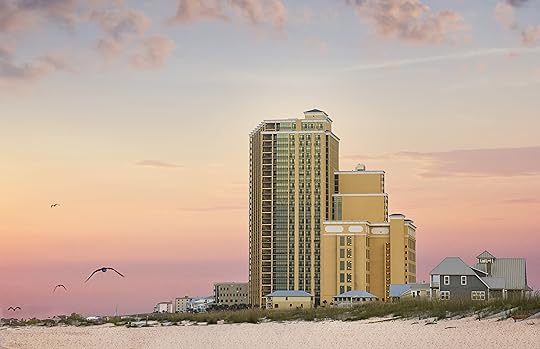
Orange Beach, AL
Photo: Sara Louise Singer/Shutterstock
9. Orange Beach, Alabama
Population: 5,981
Just west of Florida, you’ll find one of the coolest beach towns in America in Orange Beach, beginning with the sprawling Gulf State Park and finishing with the best Stateline roadhouse in the land. Orange Beach has done a lot to elevate itself from its Redneck Riviera past. It began with opening the Wharf entertainment district, complete with a giant Ferris wheel and the World Food Championships every November. It has also added great restaurants like Anchor Bar & Grill and Big Fish to bring New Orleans-worthy food to this little shore town.
Of course, the reason people come here is for the beach, and unlike a lot of Gulf Coast beach towns, Orange Beach has a huge stretch completely devoid of condos. Along its eight miles of white sandy shoreline, you’ll find Gulf State Park, with plenty of bike trails that’ll take you from the coast into the swamp and back out again. This November, it’ll open its first park lodge, complete with cool stuff like webbed windows so birds can peek in without flying through.
Just down the road, you’ll find Gulf Shores, home of the Hangout Music Festival and the new Big Beach Brewing. Turn the other way and you’ll find the Flora-Bama, a bar on the Florida-Alabama Stateline famous for its annual mullet toss where patrons throw fish from state to state.
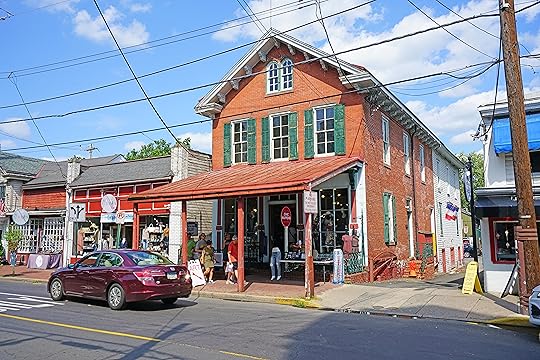
New Hope, PA
Photo: EQRoy/Shutterstock
10. New Hope, Pennsylvania
Population: 2,497
There are very few places on earth where you’ll find biker gangs sharing the same bar as a bunch of drag queens. But that’s exactly the two main communities you’ll find in this tiny Bucks County town — where motorcycles are parked all the way down Main Street underneath pride flags. New Hope’s biggest draw for families may be the scenic train station and the famous Bucks County Playhouse, but the most fun way to spend the day is hopping between the dozens of quirky shops. Browse funky costumes at Night Bird Vintage Clothing, punk rock clothes at God Save the Qweens, and witchy relics straight out of The Craft at The Creeper Gallery. Be sure to end the day with an ice cream cone at Moo Hope.
There are plenty of festivals held throughout the year in New Hope (and in Lambertville on the New Jersey side of the river, just over the walkable suspension bridge). But you should make a point of visiting in October for the iconic, annual High Heel Drag Race, where participants wearing high heels will carry a pumpkin downtown, decorate it, and return to cross the finish line before hitting the bar. 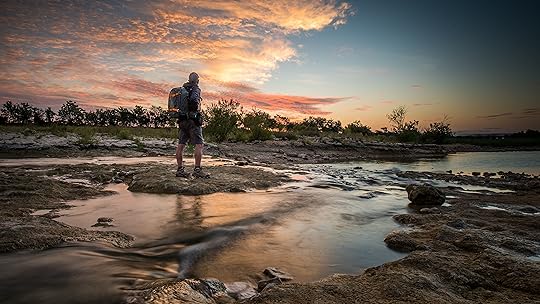
San Marcos, TX
Photo: Jason Squyres/Shutterstock
11. San Marcos, Texas
Population: 61,980
Over the last decade or so, a lot of Austin’s hippie charm has been replaced by hipsters and tech-talk. So the mantle of quirky, outdoorsy college town has been taken over by San Marcos, about 30 miles south and home to all that was great about Austin 30 years ago. Here, a guy named Sun God dances in front of the courthouse on Mondays, and musicians who can’t afford Austin play spots like the Cheatham Street Warehouse and Stonewall Warehouse almost every night. Those venues reside in the Square, San Marcos’s four-sided playland of live music and cheap bars where college kids and returning veterans listen to everything from reggae to rock to blues and spend a fraction of what they might have in larger locales.
Summer is the prime time to visit, when floating in tubes down the San Marcos River under shady trees through crystal-clear waters is the pastime of choice. You’ll find students, families, and young professionals floating all day while toting cases of beer and basking in the Texas sun.
The food here is fantastic, as well, with Austin staples like Blue Dahlia opening San Marcos outposts (with a lot less waiting). You can also drive out to Lockhart and eat at legendary barbecue joints like Smitty’s Market, Kreuz, and Black’s.

Durango, CO
Photo: Rosemary Woller/Shutterstock
12. Durango, Colorado
Population: 18,503
Durango lies just north of the New Mexico border, tucked into a valley of the Rocky Mountains. The 19th-century mining town is now home to Fort Lewis College and lucky residents who can wake up on a wintry Saturday and decide whether to ski at one of the half-dozen nearby ski areas or the larger Purgatory Resort, just a half-hour drive away. Add summer hiking in the two-million-acre San Juan National Forest, kayaking or rafting on the Animas River, fishing, hunting, and mountain biking, and pretty soon you’re out of breath.
Besides sitting in the middle of a stunning natural playground, Durango has five brewpubs and enough restaurants to offer you tasty ways to refuel after a day in the mountains. Given that it’s a college town, you’ll find plenty of pool tables to lose a few quarters at after dinner, as well. While locals love their town’s outdoor options and friendly vibe, a big draw for visitors is the Durango Silverton Railroad. It’s a historic train that takes three-and-a-half hours to get north to Silvertown, following the Animus Rover along a surprisingly narrow track cut into the mountainside.

Paso Robles, CA
Photo: Randy Andy/Shutterstock
13. Paso Robles, California
Population: 31,907
In stark contrast to the sometimes-stuffy, Instagram-filtered vibe of Napa, this quirky little town on the Central Coast is everything one looks for in a California wine country getaway. It’s home to dozens of wineries, which not only serve delicious wine without pretension but also have other attractions like a $15 cheese pairing at Le Vigne or backyard games and cornhole at Chronic Cellars. Downtown, you can sober up by scarfing a massive cinnamon bun at Joe’s Place or going farm-to-table crazy at Thomas Hill Organics.
A short drive and you’re at the Pacific Ocean, where you can either jump in the water and catch a wave at Cayucos Pier or just stand with a cold beer and watch the surfers. If you’re looking to get a little more active, cruise up the Pacific Coast Highway to Fiscalini Ranch Reserve, where a cliffside trail takes you past some of the most spectacular views in the state.
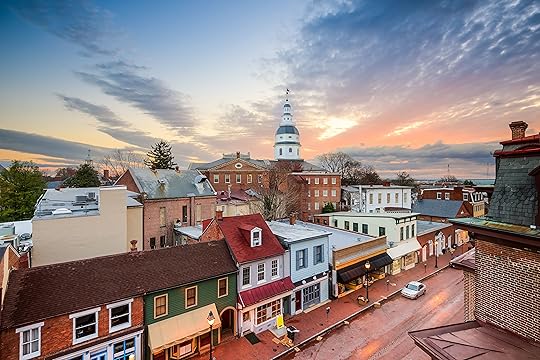
Annapolis, MD
Photo: Sean Pavone/Shutterstock
14. Annapolis, Maryland
Population: 39,418
We can’t quite put our finger on why, but Washington, DC, is feeling a bit tense lately. If the idea of taking a tour of the Capitol Building has you breaking out in a cold sweat, it’s time to turn your attention to the other nearby towns in the mid-Atlantic area, like beautiful, blood-pressure-lowering Annapolis. Less than an hour away from DC, the town on the Chesapeake Bay is one of the country’s best sailing capitals. Learn to sail at the Annapolis Sailing school, rent a schooner and cruise around town if you already know what you’re doing, or leave it to the pros and go on one of the many sailboat booze-cruises offered at sunset. There are also tons of yacht races and boat shows if you prefer to just ogle at the vessels from the safety of land.
Those in need of a drink or five will want to visit Great Frogs Winery or the Chesapeake Brewing Co. And much like Baltimore, Annapolis loves its crab, with plenty of waterfront seafood restaurants dotted throughout town like O’Learys Seafood, Boatyard Bar & Grill, and Carrol’s Creek Cafe. For an even more relaxing atmosphere, venture a little further out of town to Sandy Point State Park where you can camp right on the beach and wake up to the sound of crashing waves.
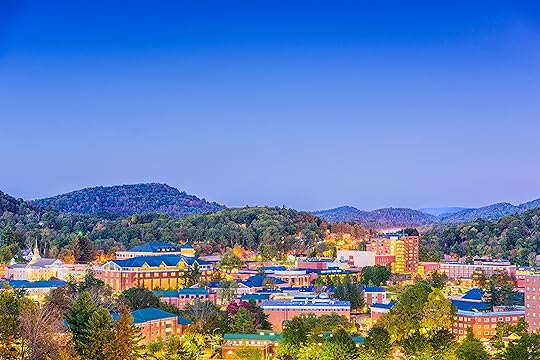
Boone, NC
Photo: Sean Pavone/Shutterstock
15. Boone, North Carolina
Population: 18,834
Cruising past the stunning fall foliage of the Blue Ridge Parkway, it’s easy to miss little Boone, nestled in the mountains of North Carolina. But a stop in this earthy, outdoorsy college town is totally worth it, where it seems a little chunk of Oregon got dropped in Western Carolina. The charming main street slopes gently uphill towards the mountains, lined with independent eateries like Carolina Pizza, Boone Bagelry, and one of the coolest sandwich shops in the country at Our Daily Bread. Students from Appalachian State University fill most of the stores, giving Boone a young, carefree energy almost everywhere.
Outside of town, it’s all about the outdoors. The Blowing Rock is the most famous attraction, an epic rock formation with panoramic views out over the Johns River Gorge. There’s also hiking through the bright colors under the Blue Ridge Parkway or trekking up to Grandfather Mountain and standing atop a rock at sunset. The mountain also has a mile-high swinging bridge between its peaks, which doesn’t swing so much as it suspends over a steep canyon. Pro tip: Look out instead of down.
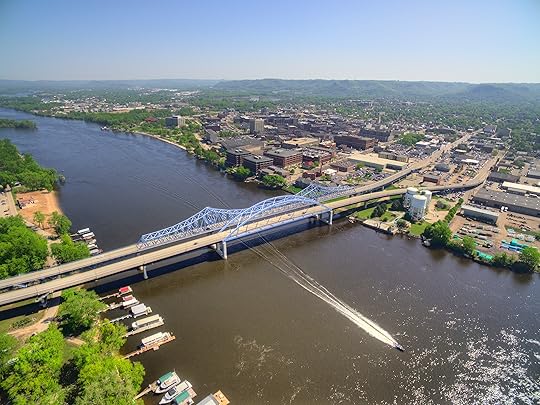
La Crosse, WI
Photo: Jacob Boomsma/Shutterstock
16. La Crosse, Wisconsin
Population: 52,440
Western Wisconsin has a noticeably different feel than the rest of the state, a little less Midwest country and a little more river-coastal. Nowhere is this more obvious than in La Crosse, known nationally as the home of Old Style beer and regionally as one of the top downhill skiing destinations in the region. Mt. La Crosse offers 18 runs with pretty respectable slopes, and you’ll find gorgeous hiking, winter mountain biking, and snowshoe trails at Upper and Lower Hixon Park. La Crosse has a huge biking community, as well, with the annual La Crosse Bicycle Festival drawing thousands to the city. To bike like a local, head out to the La Crosse River State Trail or jump on one of the monthly Beer By Bike Brigade rides that takes you through many of the city’s best beer bars.
The nightlife here takes on a distinctly western feel, too, with breweries like Pearl Street and Turtle Stack complimenting intimate live music at Bodega Brew Pub and Root Note. But the best bar in town is Casino Bar, where the bright lights outside promise “lousy service,” and the bartenders aren’t afraid to pour heavy. If you’d like something a little classier, the Charmant Hotel plates modern French food on an outdoor patio with views out over the city. And make sure you don’t leave town without getting some candy and a chocolate-dipped waffle cone at Pearl Street Ice Cream.
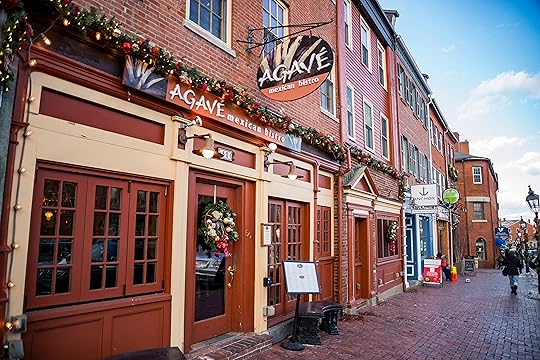
Newburyport, MA
Photo: edella/Shutterstock
17. Newburyport, Massachusetts
Population: 17,987
Outside of Boston, most people think of Massachusetts as being filled with rich vacationers with shore homes and boats named after their grandmothers. But Newburyport, 30 miles north of Boston, offers all the things those wasps love about Massachusetts — gorgeous coastline, decadent seafood, mind-blowing sunsets — just without the wasps.
This old seaport town may have plenty of history and old buildings to prove its age, but it’s also home to live-music venues featuring local bands, breweries, and a vibrant restaurant scene that sells more than just lobster. Start the day at Mad Martha’s Island Cafe, a laid-back beach eatery, and order the Crabby Patty (crab, egg, and cheese with horseradish sauce) or the caramelized-banana French toast. Then go to the Parker River Wildlife Refuge, which has miles of beach, marsh, dunes, cranberry bogs, and forest ripe for exploring. Here, you can do everything from biking to kayaking, as well as some of the best bird watching in the Northeast. Back in town, fill up at Thai restaurant Brown Sugar by the Sea (a sister restaurant to the acclaimed Brown Sugar Cafe in Boston) before having a refreshing craft cocktail at The Paddle Inn and watching the sunset over the ocean. 
Port Townsend, WA
Photo: Artazum/Shutterstock
18. Port Townsend, Washington
Population: 9,527
A onetime northwest maritime hub that’s preserved the relics of its boomtown past, Port Townsend captures the feel of the Northwest over 100 years ago without turning into a full-on theme town. The classic brick structures along downtown Water St. date back to the turn of the last century, filled with craft shops like Bazaar Girls Yarn Shop and Conservatory Coastal Home. A rigorous afternoon of shopping is best shaken off with a waterfront local beer at Sirens Pub on the Water or one of the town’s several microbreweries.
Meandering through uptown is a lesson in Victorian architecture, with grand old homes that once belonged to shipping and logging magnates filling the streets. You’ll see even more impressive homes (that you can actually stay in) at nearby Fort Worden State Historical Park, where Officers Row offers giant houses with sweeping views of Puget Sound. To get out on the Sound, hit up the Northwest Maritime Center, which offers free boat tours and kayak rentals. It’s a great way to see the city the way mariners and merchants did back in Port Townsend’s 19th-century heyday. If you’re still craving more time outdoors, Port Townsend is just over an hour from Olympic National Park.

Park City, UT
Photo: Johnny Adolphson/Shutterstock
19. Park City, Utah
Population: 8,299
Park City’s 1800s Western aesthetic attests to the town’s roots as a major mining center. But when a drop in silver prices threatened its livelihood in the middle of the last century, the state of Utah decided to promote the area as a ski destination instead. Park City Resort opened in 1963 with a gondola running right from the town. Another big change came in 1981 when the Sundance Film Festival, started a couple years earlier in Salt Lake City, moved its location to Park City.
A few decades later, Park City has evolved into the coolest town in Utah, offering plenty of world-class restaurants and shops to meet the demand of skiers and the thousands of annual Sundance attendees. Even after the festival ends in early February, Park City has plenty to do: In winter, the Park City Mountain resort is now much larger while the upscale Deer Valley Resort is a five-minute drive up the road. Summer activities include everything from whitewater rafting to horseback riding, with much fairer temperatures than the desert landscape a few hours south. And if you’re worried about being able to grab a drink that isn’t a 3.2% beer (it’s still Utah, after all), Park City has you covered. The High West Distillery is the world’s only ski-in distillery, where you can happily lap up full-strength whiskey without fear of the Zion Curtain.

Traverse City, MI
Photo: Aerial Up North/Shutterstock
20. Traverse City, Michigan
Population: 14,674
People outside of the Midwest don’t really think of Michigan as being a state full beach towns, but spend a summer weekend in Traverse City and you’ll probably start looking down your nose at Florida. No beach town in America brings big-city-level wine, beer, and food like Traverse City. It sits at the end of the Leelanau Peninsula, one of the top wine destinations in the Midwest. Here, you can spend the day sipping wine then watch the sunset from the beach at Sleeping Dunes National Lakeshore. Or if you prefer your beaches with dayclubs and volleyball nets, hit the Holiday Inn West Bay Resort, about as close to Mallorca as you’re gonna get on the Great Lakes.
In town, it’s all about the beer, whether you’re sipping pints at the famous 7 Monks Taproom or perusing some of the other lively suds-slingers like Filling Station, Brew, Right Brain, or Terra Firma. In Traverse City, you can sample international cuisine as easily as you would in a bigger city, whether it’s Italian at Trattoria Stella from James Beard-nominee Myles Anton, Mexican at Spanglish, or Asian-Latin fusion at Georgina’s. Though no trip here is complete without a trip to Frenchie’s Famous, an unassuming breakfast/lunch spot that’s a celebrity-chef favorite.

Franklin, TN
Photo: James R. Martin/Shutterstock
21. Franklin, Tennessee
Population: 74,794
Don’t you dare call it a Nashville bedroom community. Sure, it’s a scant 20-minute drive down I-65 from Music City, but Franklin has its own downtown, music festivals, history, and identity. It’s also got laws banning paparazzi, which is why celebs like Justin Timberlake, Tim McGraw, and Alan Jackson call the area home. JT helped bring the Pilgrimage Music Festival to town, which has become one of the biggest festivals in the state. And the live music at spots like Puckett’s Grocery and Gray’s On Main, as well as at the weekly summer outdoor concerts, are on par with what you’ll find 20 minutes north.
The historic downtown maintains its small-town USA character, and though the city was the site of one of the most famous battles of the Civil War, the only remnants you’ll find are in the historic battlefields throughout town. Franklin also has all the big-city amenities one might find in Nashville, whether it’s beer at Mantra, distilleries at Leiper’s Fork and H Clark, or wines at Kix Brooks’ Arrington Vineyards. Franklin’s regularly features on “best places to live and raise families” lists, but don’t let that to deter you if you’re not at that stage yet; Franklin is anything but boring, and it’s absolutely worth a side trip on your next visit to Nashville. Plus, we guarantee you’ll run into significantly fewer bachelorette parties.

Santa Cruz, CA
Photo: LMspencer/Shutterstock
22. Santa Cruz, California
Population: 64,465
College students know Santa Cruz as the home of University of California’s very chill UCSC campus in the forest of the Santa Cruz Mountains, which are packed with hiking trails. Surfers know it as one of the very best surf spots in the world as reefs and kelp beds along craggy coastline make for exceptionally consistent waves for every skill level. Kids know Santa Cruz for its old-fashioned beach boardwalk, boasting a 1924 wooden roller coaster that should be on any adrenaline junkie’s bucket list.
Spanning the upper edge of Monterey Bay, Santa Cruz also has some of the best weather on the Northern California coast, as its coastal mountain range and the bay’s topography protect it from the summer fog that socks in a lot of the coastline in either direction. With local farms and ranches so close by, and a dedication to sustainable dining, you also have incredible farmers markets and restaurants. Add a hip downtown with bars and music venues, and there’s not much else you could possibly want in a seaside town.
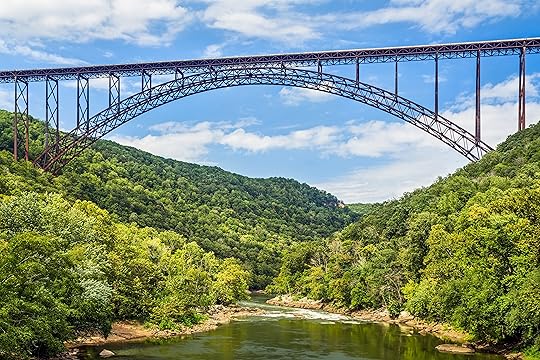
Fayetteville, WV
Photo: Kenneth Keifer/Shutterstock
23. Fayetteville, West Virginia
Population: 2,852
Hold your West Virginia jokes, please, because when it comes to mountain scenery and hardcore adventure, nowhere east of the Mississippi tops West Virginia. It’s captured best in Fayetteville, the jumping off point — sometimes literally — for the New River Gorge. It’s a short drive from the most treacherous whitewater in the East along the New River, which flows under the iconic New River Gorge Bridge. Every October the bridge hosts Bridge Day, when all the bungee jumpers, base jumpers, and other people who find leaping off an 876-foot bridge to be a good use of their time converge to take the leap.
Fayetteville is also chock full of food to indulge in after a hard day of action. Pies and Pints is the sort of creative-pizza-and-beer gem you expect to discover in a Rocky Mountain college town and might be the culinary highlight of the state. For something more upscale, grab a craft cocktail at The Station, a converted gas station that now serves ribeyes, wild salmon, and local dry-rubbed pork chops in its romantic dining room. Or grab a sandwich at one of the best sandwich shops in America at Secret Sandwich Society.

Waimea, HI
Photo: Loucina Kouyoumdjian/Shutterstock
24. Waimea, Hawaii
Population: 12,160
Waimea, on an inland plateau at the north end of the Big Island of Hawaii, is where the cowboy West meets old school Hawaii. It’s home to Parker Ranch, the largest ranch in Hawaii and employer of many of the town’s residents. Here, you’re as likely to see a paniolo, or Hawaiian cowboy, cruising through town on his horse as you are a surfer with a board under her arm. You can have a go at horseback riding through the lush Waipi’o Valley yourself with Waipi’o on Horseback.
With an elevation over 2,600 feet, Waimea is cooler than the island’s coastal towns. It also lies at the crossroads of the Big Island’s lush and wet windward side and its sunny and dry leeward coast — everything grows here. It holds one of the best farmers markets you’ll ever go to and is packed with farm-to-table restaurants that are consistently rated as some of the best on the islands. In short, it’s a chiller, realer Hawaii than the tourist-packed beaches elsewhere in the state. Here, you can actually relax and soak up good island vibes instead of being harassed with leis at a resort luau. (A side note: Kauai and Oahu also have towns named Waimea, and no shade to those towns, but we’re recommending the Waimea that’s also sometimes called Kamuela. Less confusing, right?)
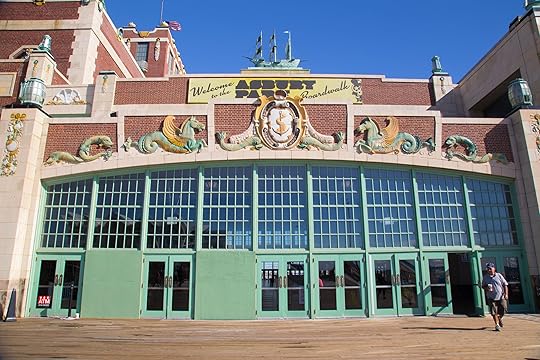
Asbury Park, NJ
Photo: littlenySTOCK/Shutterstock
25.Asbury Park, NJ
Population: 15,722
We try not to play favorites, but Asbury Park is the only city that’s made it onto our list of Coolest Towns three years in a row. Each time we look back expecting it to have sold out or been overrun with tourists and high-rise condos, yet each year, it continues to deliver new surprises in the form of live music, diverse food, an insanely good bar scene, and real Jersey Shore vibes where everyone keeps their fists planted firmly around a drink.
Once a grungy town with ghostly relics of the Jersey Shore’s golden days — the dilapidated Paramount Theatre and Convention Hall, defunct casino and carousel, and empty boardwalks without amusements — Asbury Park has exploded in the last decade as the cultural hub of the Jersey Shore. Here, independent musicians rock out at the same sticky-floored venues that gave acts like Bruce Springsteen and the E Street Band their start. There’s always live music happening nightly, whether at the iconic Stone Pony, The Saint, or the recently reopened music venue/bowling alley Asbury Lanes. One of the coolest music events to emerge is the Shadow of the City festival, helmed by Bleachers frontman Jack Antonoff, which features young, up-and-coming indie artists and the occasional throwback early-‘00s favorite.
The famed Wonder Bar now hosts a very popular Yappy Hour, during which people can bring their doggos to the sandy outdoor patio. At Porta, guests sit at communal picnic tables to nosh on wood-fired pizza (probably the best in the state), sip on craft cocktails, and maybe even dance to a DJ set at night. The Asbury Festhalle & Biergarten serves standard German fare with a ton of draft beer options, and the infectious, convivial atmosphere makes it the best place to go out with a group in all of NJ. Stay at any of these bars long enough, though, and you’ll inevitably end up stumbling into Johnny Mac’s at 1:00 AM for the free pizza that comes with your drink.
The post The 25 coolest towns in America: 2018 appeared first on Matador Network.

How to do Amsterdam like a local
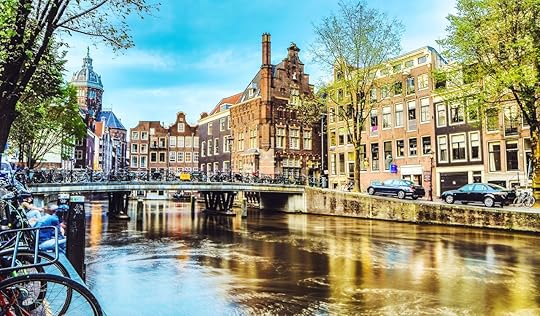
Amsterdam is a city with a tourism problem. Fewer than one million people live there, and nearly 20 million are expected to visit by the end of 2018. That number only seems to be going up, and despite the money it brings in, locals are getting sick of the neverending flood of people from the UK, the US, and elsewhere. It’s easy to understand why: Amsterdam is often treated like an adult Disneyland with plenty of legal weed, drinking, and prostitution. Overindulgence isn’t the real Amsterdam, though.
I went to the city to spend time with distillers, bartenders, and other people who live in Amsterdam. Yes, there were plenty of drinks and a coffee shop visit or two, but there were also experiences that the average tourist normally misses. Here are the coolest, local-approved things to do in Amsterdam.
Rent a boat and explore the canals at your own pace.

Photo: R.A.R. de Bruijn Holding BV/Shutterstock
Other than perhaps Venice, Amsterdam is the most famous canal city in the world. Houseboats line the sides of the canals like water-bound shotgun houses, and stalls near bridges hawk boozy boat tours with private bartenders. The latter is for first-time tourists, and even boathouse living has become something for visitors thanks to a sort of Airbnb for houseboats. Take in the canals like a local instead by renting a whole boat for yourself and friends. Sure, you have to drive the thing and navigate on your own, but it’s surprisingly easy and affordable to get your hands on a boat (no boating license needed). Be the captain of your own ship and your own Amsterdam adventure. Avoid local holidays, however, when the city descends on canals, and it becomes more like bumper boats than a casual float.
Order rijsttafel at an Indonesian restaurant.

Photo: Iwan Tantomi/Shutterstock
The Netherlands is and pretty much always has been a trading country. The Dutch East India Company ruled the seas for nearly 200 years starting in the 1600s, bringing spices, wealth, and culture back to the company’s headquarters in Amsterdam and beyond. Indonesia has had one of the most lasting impacts on the country, as is seen in its prevalence of Indonesian food, and you shouldn’t miss ordering rijsttafel at an Indonesian restaurant. Rijsttafel means rice table and amounts to what is essentially a tasting menu. Combine Dutch and Indonesian in your glass alongside your meal with Bobby’s Jenever, a traditional Dutch spirit that’s sort of like a mix between whiskey and gin, which gets its flavor from the same Indonesian spices and herbs that’s so prevalent in the food. Amsterdam is the best place to eat Indonesian food outside of Indonesia, so take advantage.
Eat the snacks — and lots of them.

Photo: StudioPortoSabbia/Shutterstock
When you’re not downing Indonesian food, graze on the many different types of snacks Amsterdam has to offer around every corner. Raw herring is the most famous. Find it at stands and shops around the city served with raw onion and pickled cucumber. To eat it, pick the herring up by its tail, tilt your head back, and down the fish. You might need a drink afterward, so head to a bar and order bitterballen while you’re there. Served at countless bars, bitterballen is a deep-fried ball of meat and melted cheese. It pairs well with all of Amsterdam’s hometown beer, whether you go for a Heineken or something from one of the upstart craft breweries, like a sour or New England IPA from Brouwerij Troost.
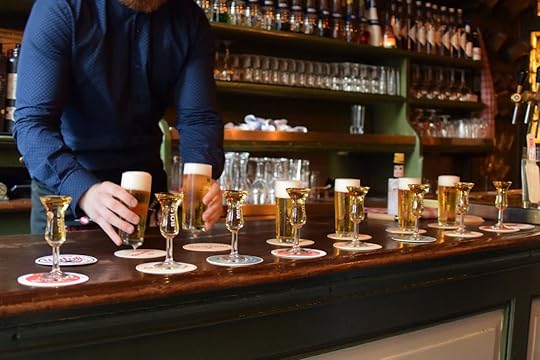
Photo: Nickolaus Hines
Finally, no snack tour of Amsterdam would be complete without a trip to Amsterdam’s oldest bars. De Drie Fleschjes, which dates back to 1650s, is famous for its history and its kopstoot, which translates to “headbutt” and is the Dutch version of a beer and a shot. Do enough drinking and you’ll need some food, however. There are homemade meatballs, cheese, and ossenworst (smoked sausage) on offer, but the real traditional order is a bunch of hard-boiled eggs, which you’ll find served throughout old bars in the city.
Take in Amsterdam’s rising cocktail scene.

Photo: Vesper Bar/Facebook
Cocktails aren’t native to Amsterdam. The city is more known as a place for beer drinkers (Heineken being the biggest local brewery) and small servings of straight liquor. Dedicated cocktail bars with Dutch flair are on the rise, though, and locals are taking notice. The Flying Dutchman has more than 500 bottles and focuses on classic cocktails served up by a knowledgeable staff. Vesper, whose name nods to James Bond’s drink of choice, has a rotating seasonal menu with milk-washed cocktails. Rosalia’s Menagerie has more than 60 local genevers and a cocktail menu that lists moods instead of ingredients. The list goes on. If you’re looking to drink like a modern local, you could do worse than hitting a cocktail bar.
Eat at a living-room restaurant.
Bypass the restaurants and bars altogether and go straight to a local’s living room for a meal. It might not be something that locals do regularly, but it is a chance to see what it’s like to live in the city and make new friends. Living room restaurants, or huiskamerrestaurants in Dutch, are exactly what they sound like: people’s homes turned into temporary restaurants. The vibe is communal and relaxed, like a dinner party with friends you just haven’t met yet. Dinner and drinks are cheaper at living-room restaurants than out in the city, and there are more chances to speak with people you’d normally never come across. You can find and reserve a spot on Sharednd.
Take a day trip out of the city.
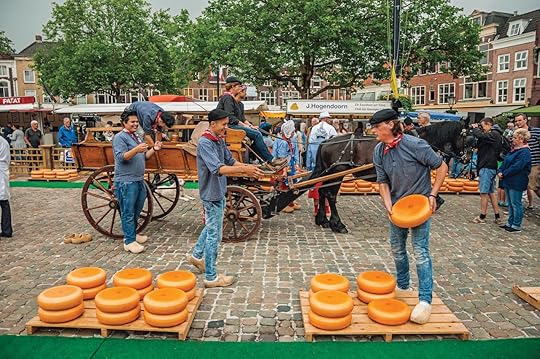
Photo: Celli07/Shutterstock
Staying in Amsterdam isn’t just about staying in Amsterdam. Thanks to the overload of tourists, the city is actually encouraging people to get out when they come for a visit — which isn’t bad advice. Go to one of Amsterdam’s many nearby beaches in the summer, or take a day trip out to a nearby distillery for a taste of the Netherlands and the chance to explore a Dutch town that has more locals than tourists. Rutte Distillers in Dordrecht is just a short train ride away, where you can sip on award-winning gin and then bike along the waterfront. Or venture out to Rotterdam and nearby Schiedam to catch modern city vibes with thinner crowds. If it’s spring or summertime when you visit and you’re a dairy fiend, take a half-hour train ride to the Alkmaar cheese market or an hour ride out to Gouda, home of gouda cheese, for an all-out cheese binge. 

More like this: 7 beautiful canal cities in Europe that aren’t Venice
The post Everything tourists miss when they come to Amsterdam appeared first on Matador Network.

Matador Network's Blog
- Matador Network's profile
- 6 followers



